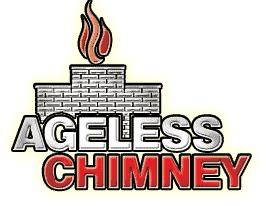Fireplace Repair in Union Square, NY
What our clients say




Read About Us
Browse Fireplace Services
contact us
Preventing Winter Problems with Fireplace Repair Services in Union Square, NY

Comprehensive Fireplace Maintenance
Fireplace maintenance is essential to prevent winter issues and ensure your home stays warm and safe. In Union Square, NY, Ageless Chimney provides thorough inspections and repairs. Our expert technicians in New York City are trained to identify and fix potential problems before they become serious, giving you peace of mind.
Regular maintenance helps keep your fireplace functioning efficiently. By choosing Ageless Chimney, you can trust that your fireplace is in good hands. Our services are designed to maintain your fireplace’s safety and performance, ensuring it is ready for the colder months ahead.
Certified Technicians
Our team is fully certified and trained to handle various fireplace maintenance and repairs.
Customer Satisfaction
We pride ourselves on delivering excellent customer service and ensuring complete satisfaction.
Local Expertise
Serving the New York City area, we understand the unique needs of homes in Union Square, NY.

Why Regular Maintenance is Crucial
Regular maintenance of your fireplace can prevent hazardous situations such as chimney fires and carbon monoxide leaks. These dangers are often caused by blockages or cracks that go unnoticed without professional inspections. By scheduling routine inspections with Ageless Chimney, you can ensure your fireplace operates efficiently and safely, reducing the risk of such hazards.
Homeowners in Union Square, NY understand the importance of maintaining a safe and efficient heating source, especially during the cold months. Regular maintenance not only ensures your fireplace’s safety but also improves its performance. A well-maintained fireplace burns more efficiently, providing better heat output and saving you money on energy costs.
Our services are designed to meet the specific needs of homes in New York City. Whether cleaning the chimney, inspecting the flue, or checking for structural issues, Ageless Chimney tailors each service to your fireplace’s unique requirements. This personalized approach guarantees that every part of your fireplace system functions optimally, ensuring your home remains warm and safe throughout winter.

Our Expert Services
At Ageless Chimney, we offer a comprehensive range of fireplace maintenance services designed to keep your fireplace in top condition. Our services include chimney cleaning, flue inspections, and masonry repairs, all performed by our skilled and experienced technicians. We use the latest tools and techniques to ensure that each job is done right the first time, providing you with peace of mind and a safe home environment.
Maintaining your fireplace is crucial for winter preparedness in Union Square, NY. Our technicians understand the local climate and the specific challenges it poses. This knowledge allows us to provide targeted solutions that address common issues homeowners face in the area. By choosing Ageless Chimney, you are investing in a service tailored to your fireplace’s and your home’s unique needs.
Customer satisfaction is our top priority. We are committed to providing reliable and efficient service, ensuring your fireplace is ready whenever you need it. If you have any issues or concerns, our customer service team is available at 516-795-1313 to assist you promptly. We strive to deliver exceptional service to all residents of New York City, ensuring that your fireplace remains a reliable source of warmth and comfort.
Have a question?
Union Square is a historic intersection and surrounding neighborhood in Manhattan, New York City, located where Broadway and the former Bowery Road – now Fourth Avenue – came together in the early 19th century. Its name denotes that “here was the union of the two principal thoroughfares of the island”. The current Union Square Park is bounded by 14th Street on the south, 17th Street on the north, and Union Square West and Union Square East to the west and east respectively. 17th Street links together Broadway and Park Avenue South on the north end of the park, while Union Square East connects Park Avenue South to Fourth Avenue and the continuation of Broadway on the park’s south side. The park is maintained by the New York City Department of Parks and Recreation.
